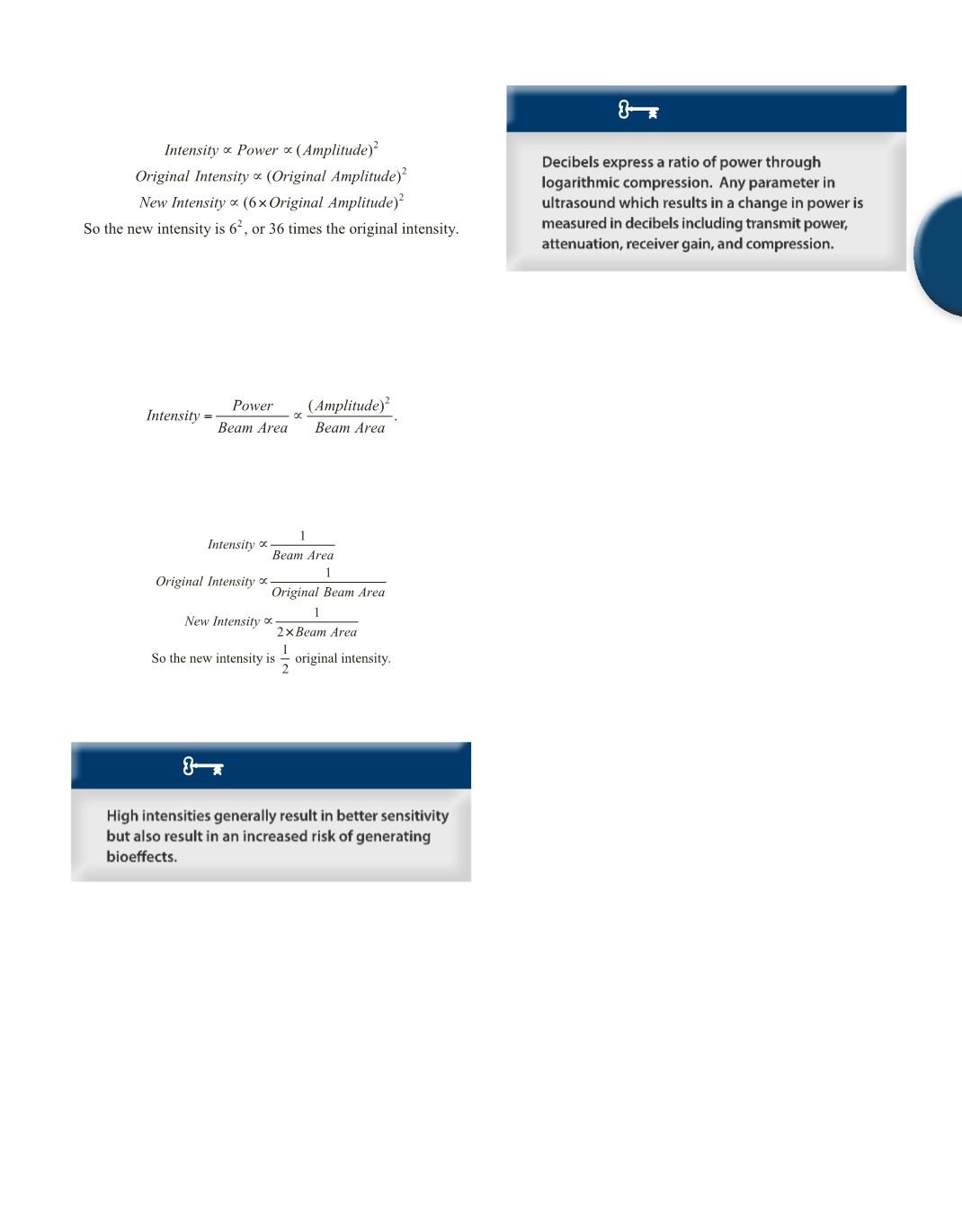
Chapter 2: Waves
35
2
◊
Example 2:
If the transmit voltage is increased by a factor of
6, what happens to the beam intensity?
Note: That the power is proportional to the amplitude squared.
Since the intensity equals the power divided by the area, the
intensity is also proportional to the amplitude squared.
Mathematically, we can write:
◊
Example 3:
If the beam area is doubled, what happens to the
intensity?
Note: Stating the intensity is half of the original intensity is the same
as stating that the intensity has been decreased by a factor of 2.
KEY CONCEPT
Relation to Future Topics
The concepts related to amplitude,power,and intensity are pervasive
in ultrasound. The following is a partial list of the topics which
are related:
1) common intensity measurements and risk of bioeffects
2) mechanical index and cavitation
3) receiver gain and compensation (TGCs)
4) attenuation
5) sensitivity
6) signal-to-noise ratio
7) non-linear effects and harmonics
KEY CONCEPT
13. Decibels (dB)
13.1 The Need for Decibels
We have just learned that acoustic intensity is proportional to the
power, and that power is proportional to the square of the ampli-
tude. In Chapter 3 we will learn that the rate at which the signal
intensity decreases while traveling through the body (attenuation)
is very non-linear. Non-linear attenuation almost guarantees that
the range of signal intensities will be very large since the wave at
shallow depths will have a much higher intensity than at deeper
depths. As a result of the very non-linear attenuation, we will have
a need for a non-linear means by which to assess the changes in
signal intensity or power.
13.2 The Definition of Decibels
In Appendix A: Mathematics, we learned a powerful non-linear
mathematical tool which is very useful for compressing large ranges
of data. That tool is the logarithm. The term we use to refer to rela-
tive changes in signal power (or intensity) is decibels. A decibel is
defined as a logarithmic power ratio. Since you have already learned
how to calculate a logarithm, converting from a ratio to decibels is
relatively straightforward.
Notice that in the definition we used the term“power ratio”. A ratio
implies division of two numbers. Specifically,the power ratio entails
taking the ratio of an initial and a final power. In ultrasound, this
power is produced by driving a transducer with an excitation volt-
age. The acoustic power into the patient can be changed by changing
the transmit voltage through the power output control. Within the
patient,the power changes as the sound travels and interacts with the
tissue. Therefore,we can see that there are two distinct mechanisms
by which the power is changed.
13.3 The Equation for Decibels
In terms of the power ratio used to calculate decibels, the initial
power is the acoustic power before whichever change occurs (chang-
ing the power control or attenuation in the body). Obviously, the
final power is the resulting acoustic power after the change has oc-
curred (after changing the power control knob or the attenuation
from traveling in the body). Putting the definition of decibels into
equation form we have:
SAMPLE PAGE


